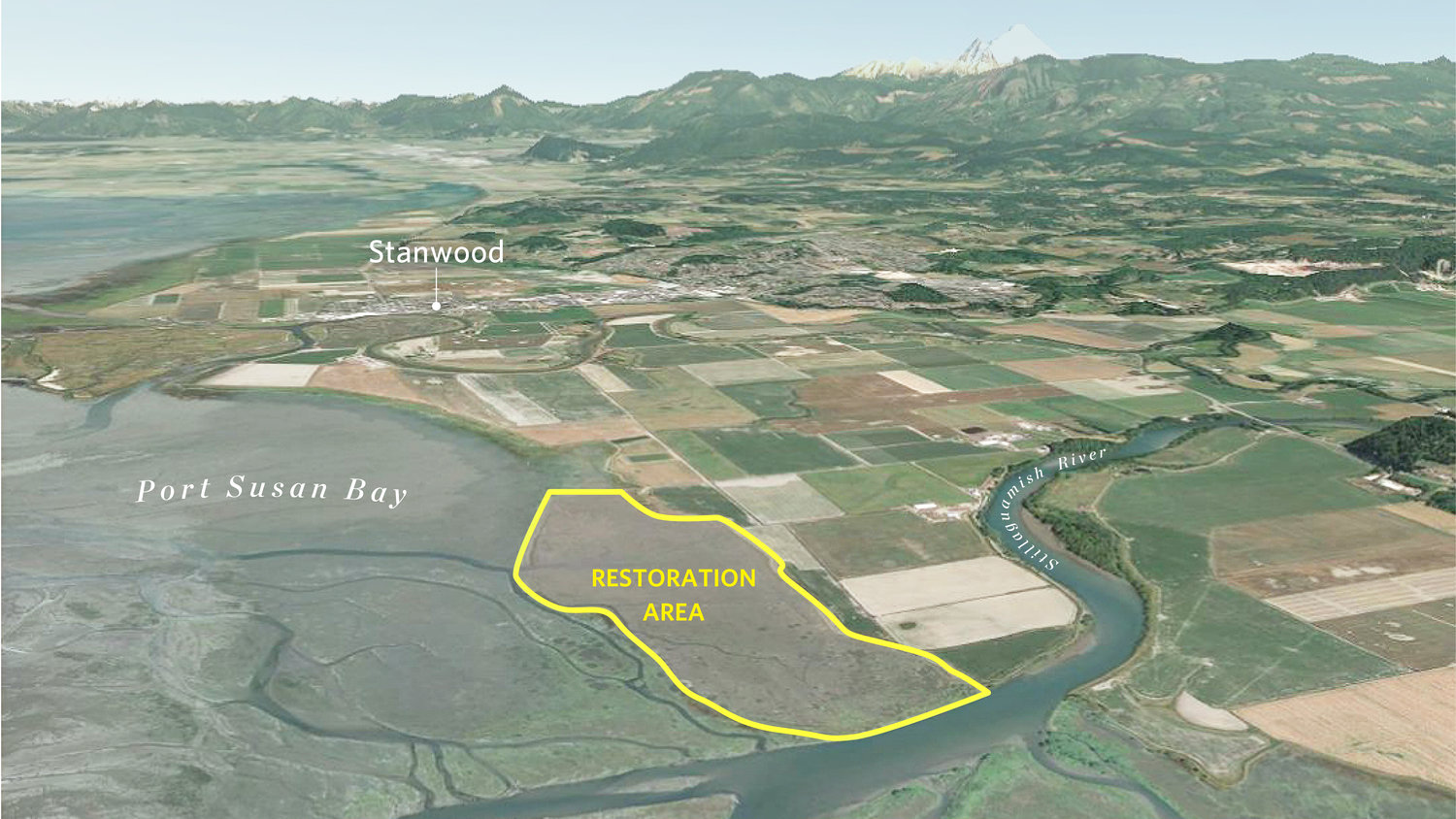Estuaries Blue Carbon Capture
By Molly Bogeberg, marine conservation coordinator
Carbon capture, or sequestration, is a pivotal element of climate change strategies. We often think about forests as the heroes of natural climate solutions that remove carbon dioxide from the atmosphere. However, did you know that marine ecosystems like estuaries can store carbon, too?
Estuary sediments can store carbon 10 times as quickly [1] as sediments in forests and, if undisturbed, they can store carbon below ground for thousands of years. Coastal habitats that capture and store this “blue carbon” in marine plants and sediments include mangroves, sea grasses and estuaries.

Here in the Pacific Northwest, some of our greatest blue carbon assets lie in coastal estuaries. Estuary plants such as bulrushes and sedges store carbon in their leaves and roots. However, most of the carbon storage in estuaries occurs in the sediments below. The carbon contained in detritus, such as woody debris and eelgrass, are transported to the estuary by rivers and tides, trapped by estuary plants and degrade into sediment. When the estuary plants die, they also degrade and contribute to carbon storage in the sediment.
Even though estuaries appear to be narrow strips of habitat along coastlines, they are mighty in many other ways, too: They filter water, provide nursery habitat for juvenile salmon and baby crabs and protect communities and homes from flooding.
But coastlines around the world are under pressure. They are popular places to live, important for the transport of goods through ports and nutrient-rich farming areas. When estuaries are diked and drained or filled for development, their ability to store blue carbon is impacted.
Port Susan Bay preserve is a 4,122-acre estuary near the mouth of Hat Slough, where the Stillaguamish River meets the salty sea. Today, TNC preserves and manages this area as healthy habitat and coastal ecosystem. But historically, 150 acres of the preserve were diked and farmed. Similar diked and drained estuary habitat helped build thriving agriculture in the Stillaguamish and Skagit Valleys.

Neighboring farmers at Port Susan Bay were key partners in our efforts to restore this land to estuary habitat while also addressing local flood issues affecting adjacent farms. This community-driven effort recognized the value of nature for people and wildlife while respecting agricultural needs. In 2012, we breached the dike and re-flooding the area, and today the estuary has started to reform. Water is carving channels into the mud, and estuary plants like bulrushes and sedges are taking root. In addition to providing habitat for salmon and Dungeness crab, the site is also serving as a carbon sink.
After 6 years of monitoring at our Port Susan Bay preserve, a team of staff at TNC are taking a closer look and thinking about how to make the site even better habitat for fish and other animals while ensuring the estuary is resilient into the future.

A two-year study by Katrina Poppe and John Rybczyk of Western Washington University studied carbon sequestration and marsh growth at TNC’s Port Susan Bay preserve after restoration. Their study found that as the estuary recovers and accumulates sediments, the 150 acre restoration area is expected to sequester about 4,500 to 9,000 Tonnes of carbon, equal to taking 3,000- 7,000 off the road for one year (Poppe et.al 2019).[2]
As carbon dioxide accumulates in our atmosphere; as temperatures increase, sea-levels rise, and water pushes inland, we have choices to make. Will we try to keep the water out, or will we work with nature, building resilient shorelines that are not only beautiful but important for the fish, crabs and carbon storage.
This past week, I was tromping through the marsh, preparing for another field season of estuary monitoring and my feet started to sink into the deep sticky mud. I had 2 thoughts: “Ugh! I’m stuck! And Wow! Look at all this carbon rich sediment- how wonderful!”
